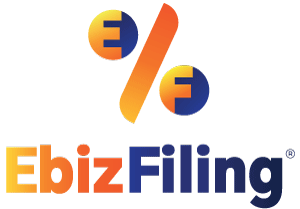
-
April 28, 2022
“What is AMT?”, “How to calculate AMT?”, And Applicability of AMT (Alternative Minimun Tax)
Introduction
The concept of MAT (Minimum Alternative Tax) was first adopted for business, and it was gradually extended to all other taxpayers in the form of AMT (Alternative Minimum Tax). The provisions relating to AMT are applied in a modified pattern to non-corporate taxpayers in the form of Alternate Minimum Tax, or AMT. As a result, MAT is applicable to businesses, whereas AMT is applicable to individuals. Sections 115JC to 115JF of the Internal Revenue Code deal with AMT (Alternate Minimum Tax). In this article information on “How to Calculate AMT?”, “What is AMT?” And Applicability of AMT is mentioned.
What is AMT?
Alternative Minimum Tax (AMT) is a tax that can be paid instead of the ordinary tax. The AMT rate is now at 18.5 percent (plus applicable surcharge and cess). In an FY (Financial Year), the Alternative Minimum Tax (AMT) is applied on ‘adjusted total income’ when the tax on regular income is lower than the Alternative Minimum Tax on adjusted total income. As a result, regardless of their ordinary tax obligations, persons who are subject to AMT laws must pay AMT.
AMT (Alternative Minimum Tax) Rate
-
AMT is imposed at 18.5% of the adjusted total income for the non-corporate taxpayer. There will also be a surcharge and a Cess that will be applied to the non-corporate taxpayer.
-
In the event of a non-corporate assessee that is engaged in the Convertible Foreign Exchange is 9%. It will also include Surcharge and Cess.
Basic provisions relating to the AMT’s applicability to various taxpayers
Every non-corporate taxpayer who has claimed a deduction under section 80H through 80RRB (excluding 80P), (ii) a deduction under section 35AD, or (iii) a deduction under section 10AA will be subject to the AMT requirements. As a result, the AMT requirements do not apply to a non-corporate taxpayer who has not claimed any deductions under the previously mentioned sections. However, the following considerations should be made in this regard.
-
The AMT provisions apply to any other person (i.e., not an individual, a HUF (Hindu Undivided Family), an AOP/BOI, or an artificial juridical person), regardless of their income.
-
Individuals, Hindu undivided families, associations of persons, bodies of individuals (whether incorporated or not), and artificial juridical persons are subject to AMT only if their adjusted total income (explained below) exceeds INR 20,00,000.
Furthermore, the AMT requirements do not apply to anyone who has taken advantage of the tax breaks available under sections 115BAC and 11BAD.
Source : Income Tax India
How to calculate AMT (Alternative Minimum Tax)?
The following is how the AMT tax liability is calculated:
The taxpayer must first determine his or her tax liability under the ordinary income tax system. If claimed, deductions covered by AMT, such as Section 10AA, Section 35AD, Section 80H to 80RRB, and so on, shall be added to the tax burden.
Your adjusted income is the amount after these deductions have been taken into account. This adjusted income will be subject to an AMT of 18.05 percent. There are also additional cess and surcharges to consider. Below is the table for Adjustable income calculation and AMT calculation.
|
Adjustable Income Calculation |
|
|
Particulars |
Amount |
|
Taxpayer Taxable Income |
xxxx |
|
+ Deduction under Section 80HH to 80RRB |
xxxx |
|
+ Claims under Section 35AD (reduce by depreciation allowed) |
xxxx |
|
+ Claims if any under Section 10AA |
xxxx |
|
Total Adjustable Income |
xxxx |
|
AMT (18.5% Applicable) |
xxxx |
|
The calculation for Tax Liability applicable |
|
|
Tax calculation based on the normal Income Tax Provision |
xxxx |
|
Tax Liability as per AMT (18.5%) on Adjustable Income |
xxxx |
|
Taxpayer Tax Liability |
Whichever is higher from the above will be considered |
The information mentioned in AMT Report
The AMT report should have three paragraphs, according to the Institute of Chartered Accountants of India (ICAI) rules.
The first paragraph will be a declaration that the CA has examined all of the taxpayer’s essential accounts and records in order to compute the amounts appropriately.
The certification of the calculations used to arrive at the adjusted total income and the AMT will be included in the second paragraph. It will also show the entire amount of tax that the individual handles under Section 115JC.
Finally, the third paragraph certifies that the information provided in Annexure A, the attached paper, is correct.
The following are the details that must be supplied in Annexure A of the report:
-
The taxpayer’s name is mentioned
-
The address of the taxpayer
-
PAN (Permanent Account Number)
-
The total income of the taxpayer
-
The entire amount of tax due as a result of this income
-
Information on section 10AA deductions that have been claimed
-
The year of evaluation
-
Deductions claimed under Section 35AD, including the depreciation allowed by Section 32
-
The adjusted total income of the taxpayer
-
Deductions claimed under Sections 80H to 80RRB are listed below (except 80P)
-
Alternative Minimum Tax owed by the taxpayer
Alternative Minimum Tax (AMT) Credit
The Alternative Minimum Tax (AMT) was introduced to collect taxes from tax-exempt enterprises, but it was also intended to provide the government with a constant stream of money. As a result, while minimum tax is imposed in an FY where normal tax is lower than AMT, Alternative Minimum Tax paid earlier can be carried forward and offset against normal tax to the extent of the difference between normal tax and AMT in subsequent FYs when AMT is lower than normal tax. After such a set-off, any remaining amount can be carried forward to subsequent fiscal years. This concept is known as AMT Credit.
The AMT Credit, on the other hand, can only be carried forward for up to 15 fiscal years from the year the AMT is paid. The AMT credit will vary if the ordinary tax rate changes as a result of an order issued by the IRS. Furthermore, if the person gets a foreign tax credit, any FTC (Federal Trade Commission) in excess of the AMT will be discarded (tax paid in foreign countries with which India has a Bilateral or Unilateral Tax Agreement).
Conclusion
All taxpayers subject to the AMT must get a report in Form No. 29C from a Chartered Accountant declaring that adjusted total income and AMT were computed in conformity with the regulations of the Income-tax Act, and submit the report on or before the due date for filing the ITR (Income Tax Return). The report can be filed electronically along with the Income Tax Return.
Income tax Return
Filing of Income Tax return is necessary if you have earned any income. File your ITR with EbizFiling
About Ebizfiling -










Reviews
Ajit Mehra
29 Jul 2018I had already missed the ITR date until I came across their Facebook post which reminded me of the same. I simply contacted them and they did it all.
Devangi Patnayak
11 Mar 2018I am very happy with the way they serve their clients. They are focused on providing the best help that they can and are result oriented.
Karthikeyan Arjunan
23 Apr 2022Thanks to Krunal and team! Professional and execution on the given time. Applied for CSR form 1 registration.
December 19, 2025 By Dhruvi
What is UDIN? Everything You Need to Know About UDIN Number Begin with, If you have ever submitted a document certified by a Chartered Accountant, you may have noticed a long number mentioned on it. Many people ignore it or […]
December 18, 2025 By Steffy A
Subscription Traps: Auto-Renew OIDAR Tax Risks Introduction Subscription traps are becoming common across digital platforms that rely on auto-renew models. Many global companies overlook how these subscriptions trigger OIDAR tax liability in India. This gap often leads to serious tax […]
November 14, 2025 By Dhruvi
7 Essential Skills CAs Should Learn in 2025 for Growth Introduction As a content writer at Ebizfiling, I interact with Chartered Accountants and professionals almost every day. Over time, I have realized that the role of a CA is not […]